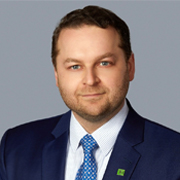U.S. FOMC rate hikes and the impact on borrowing U.S. dollars
By: Gennadiy Goldberg, Mazen Issa, Priya Misra and Oscar Muñoz
May 2, 2022 - 6 minutesHow might the U.S. Federal Reserve's expected rate hike impact borrowing U.S. dollars? Our analysts examine the potential effects on quantitative tightening (QT), foreign exchange markets and mortgage-backed securities (MBS) ahead of the rate announcement.

Macro overview
In that context, we believe the focus for markets will lie elsewhere, particularly on any guidance regarding the U.S. Fed's policy path in the near term. We expect Powell to bring home the message that the Committee is ready to front-load interest rate hikes as it seeks to get monetary policy to a more neutral stance before the end of the year.
Balance sheet runoff plans will also be in the spotlight. Specifically, quantitative tightening (QT) plans are likely to be announced at the May meeting and implemented starting June 1, with a 3-month phase-in period. Note that QT will not be an "active" policy, occurring in the background as policy rates remain the main tool for the Fed to respond to an evolving economic outlook.
QT will continue until the earlier of two scenarios:
- The banking system sees signs of reserve scarcity
- The Fed begins to cut rates
Is a 75bp rate hike a real possibility?
This will be a challenging balancing act for the Fed because it wants conditions to reflect the fact that monetary policy is set to tighten rapidly (particularly at a time when the economy remains strong), but at the same time the Committee does not want to overdo policy tightening above neutral if inflation/growth show signs of turning over.
This is the main reason we do not currently expect the Fed to accelerate its hiking pace above 50bp per meeting. The Fed is aiming to bide its time while it gets the Fed Funds rate to neutral in order to better assess the impact that tighter financial conditions are having on the real economy.
That said, Powell is unlikely to take the 75bp hike option entirely off the table and is likely to be questioned on the topic at his post-meeting press conference. It is not our base case, however, and we note that not a single FOMC member has endorsed a 75bp hike as their base case. But Powell could endorse consecutive 50bp rate hikes, which would largely serve the same purpose.
We ultimately look for the Fed to:
- Hike by 50bp in each of the May, June, and July meetings
- Hike by 25bp at each meeting between September and March
- Reach a nominal terminal rate of 3.25%
Subscribing clients can read our full analysis on the anticipated U.S. Federal Reserve rate announcement on our Market Alpha Strategy Portal
FX market implications
The gap between goods inflation and broad USD will need to close, and it is likely that the Fed wants a stronger dollar, particularly if it improves the chances to contain neutral/terminal rate pricing. From this perspective, it is certainly a good reason to maintain a hawkish stance and leave the possibility of 75bp hikes alive amid fluidity around terminal rate pricing. With QT coming out in full force, this means that king USD will be exceptionally difficult to dethrone in the currency complex.
Rates market implications
- Taking Fed funds above neutral and tolerance for above-target inflation: While there is a remarkable amount of consensus at the Fed about reaching the neutral rate (which most FOMC members see in the 2-2.5% area), there is little consensus on how much tightening the Fed needs to deliver to slow inflation. Powell is unlikely to provide overly concrete details, but if he suggests that a large overshoot of the neutral rate may be necessary, markets may react hawkishly.
- MBS sales: The January FOMC minutes suggested that the Fed might consider MBS sales once QT is well underway. We don't expect the Fed to undertake active sales since we believe that sales will have a disproportionate impact on longer-term rates and the housing market.
- Financial conditions: Monetary policy acts on the economy via the financial conditions channel. As such, Powell's characterization of financial conditions will be crucial to watch. Different measures have implied various degrees of financial conditions tightening, and it would be interesting to see exactly how much tightening the Fed believes has taken place.

Director and Senior U.S. Rate Strategist, TD Securities

Director and Senior U.S. Rate Strategist, TD Securities

Director and Senior U.S. Rate Strategist, TD Securities

Senior FX Strategist (New York), TD Securities

Senior FX Strategist (New York), TD Securities

Senior FX Strategist (New York), TD Securities

Managing Director and Global Head of Rates Strategy, TD Securities

Managing Director and Global Head of Rates Strategy, TD Securities

Managing Director and Global Head of Rates Strategy, TD Securities

Vice President and U.S. Macro Strategist, TD Securities

Vice President and U.S. Macro Strategist, TD Securities

Vice President and U.S. Macro Strategist, TD Securities

